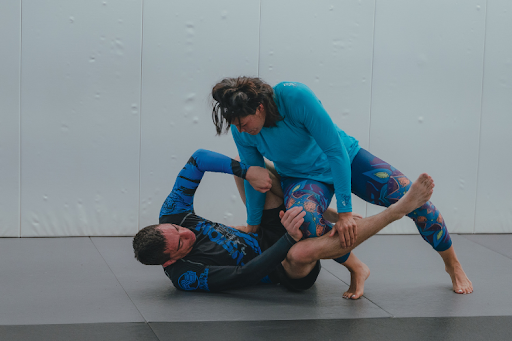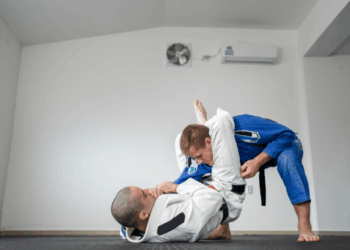Brazilian Jiu-Jitsu (BJJ) is more than a martial art. It’s a practice that teaches resilience, patience, and problem-solving on and off the mats. Many people step into their first class to get fit, learn self-defense, or try something new. What they often discover is that BJJ reshapes the way they handle challenges in everyday life.
With its mix of strategy, endurance, and adaptability, BJJ becomes a tool for growth that builds both body and mind. Whether you’re a competitor, a casual practitioner, or someone just starting out, the lessons learned through this sport can transform struggles into strengths. And if you’re training regularly, you know how important quality gear is. Companies like kingz.co.uk create high-performance BJJ apparel that supports practitioners of all ages and levels, making the journey smoother and more enjoyable.
Building Mental Resilience Through Pressure
One of the biggest lessons in BJJ comes from dealing with pressure—both physical and mental. Rolling with an opponent can feel overwhelming at first, but over time, you learn to stay calm under stress. This lesson transfers directly into life outside the gym.
- Learning To Breathe Under Stress: In tough sparring rounds, your instinct might be to panic. Instead, BJJ forces you to control your breathing and focus on the next move. This skill carries over into stressful situations at work, school, or home, where staying calm makes all the difference.
- Developing Problem-Solving Skills: Every match is like a puzzle. You’re faced with obstacles, and you need to figure out a solution in real time. Practicing this process week after week sharpens your ability to think clearly, even when the pressure is high.
- Adapting To Setbacks: Getting tapped out is part of the process. You quickly realize failure is not the end, but an opportunity to learn. That perspective helps people handle real-life setbacks without losing confidence.
Physical Strength and Endurance
BJJ isn’t about brute strength. It’s about balance, technique, and smart use of energy. Still, training regularly builds a strong body and improves endurance, which boosts overall health.
- Functional Fitness: The movements in BJJ—such as shrimping, bridging, and sweeping—train the body in natural ways. These build core strength, flexibility, and coordination, all of which help in daily activities beyond training.
- Cardio Without The Treadmill: Instead of running on a treadmill, grappling gives you a high-intensity workout that burns calories and builds stamina. You push your limits while practicing a skill, making fitness more engaging and rewarding.
- Reducing Injuries Through Mobility: Warm-ups and techniques encourage stretching and flexibility. Over time, your body becomes more mobile, which lowers the risk of injuries both in sports and everyday movements.
Discipline and Consistency
Sticking to BJJ takes discipline. Progress doesn’t happen overnight, and the belt system reflects years of consistent effort. This commitment teaches valuable lessons about persistence.
- Showing Up Regularly: Success in BJJ isn’t about talent alone. The students who grow the most are the ones who keep showing up, even on tough days. This discipline builds habits that apply to school, careers, and personal goals.
- Setting Long-Term Goals: Earning a black belt can take a decade or more. Learning to break that journey into smaller milestones helps practitioners understand the value of long-term planning.
- Balancing Patience With Effort: You can’t force progress in BJJ. You have to put in the work and let improvement happen naturally. This patience teaches people to respect the process in any pursuit.
Building Confidence and Self-Belief
For many, BJJ is a confidence builder. It shows you what you’re capable of when you push through challenges.
- Self-Defense Skills: Knowing you can protect yourself builds a quiet confidence that changes the way you carry yourself. It’s empowering without being aggressive.
- Small Wins Leading To Bigger Wins: Every time you escape a bad position or land a sweep, it’s a reminder of your progress. These small victories add up and boost self-belief.
- Facing Fear Directly: Rolling with people who are bigger and stronger can be intimidating. Overcoming that fear teaches you to face challenges head-on in everyday life.
Community and Support
Unlike solo workouts, BJJ thrives on community. Training partners push you to grow, and coaches guide you with experience and care.
- Accountability Through Teammates: Your teammates expect you to show up. That accountability motivates consistency and helps keep you on track.
- Supportive Culture: Most gyms have an environment where beginners and advanced practitioners train together. This builds friendships and creates a support system that goes beyond the mats.
- Learning Respect: On the mats, you learn to respect your training partners, your instructors, and yourself. This mutual respect strengthens relationships outside the gym as well.
Overcoming Personal Struggles
For many, BJJ becomes a way to handle personal challenges—whether it’s stress, anxiety, or major life changes.
- Stress Relief Through Training: Rolling helps release built-up tension. By focusing on techniques and sparring, your mind gets a break from daily stressors.
- Channeling Energy Positively: Instead of bottling up frustration, BJJ provides a physical outlet. That energy gets redirected into something productive and empowering.
- Finding Structure in Tough Times: Training provides routine. Having classes scheduled throughout the week gives people stability, which can be especially valuable during difficult times.
Transforming Challenges Into Strength
At its core, Brazilian Jiu-Jitsu is about taking challenges—whether physical pressure, mental stress, or personal struggles—and transforming them into strengths. The skills gained go beyond the mats, shaping the way practitioners live, work, and connect with others.
BJJ reminds us that growth happens through discomfort, and every challenge carries a lesson. The discipline of training, the resilience built under pressure, and the friendships formed along the way all show that this martial art is more than just a sport. It’s a tool for personal transformation.







